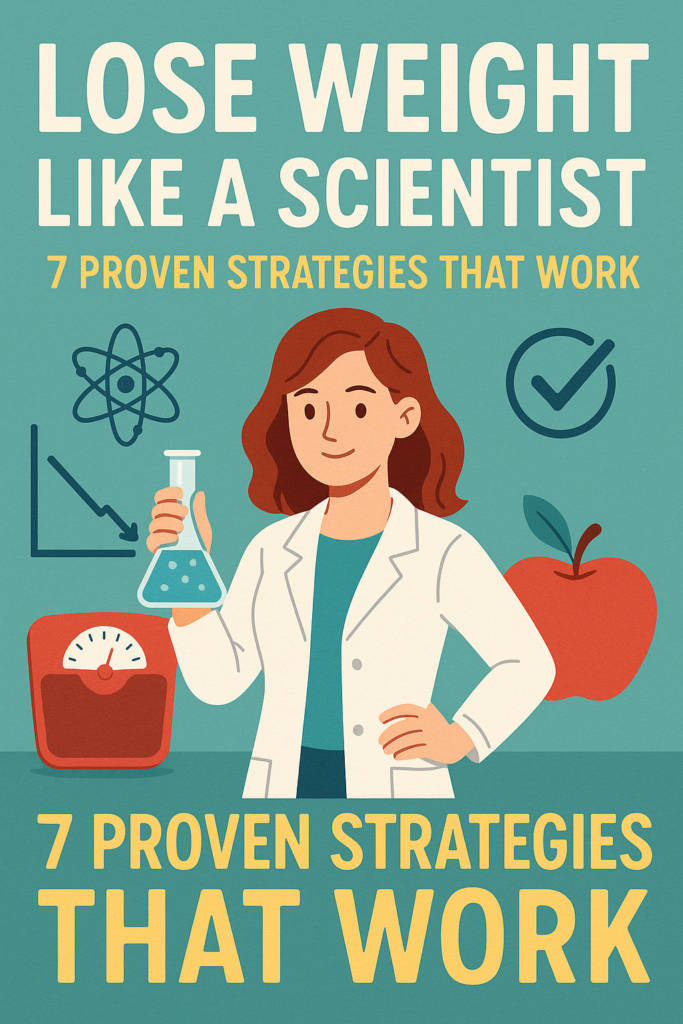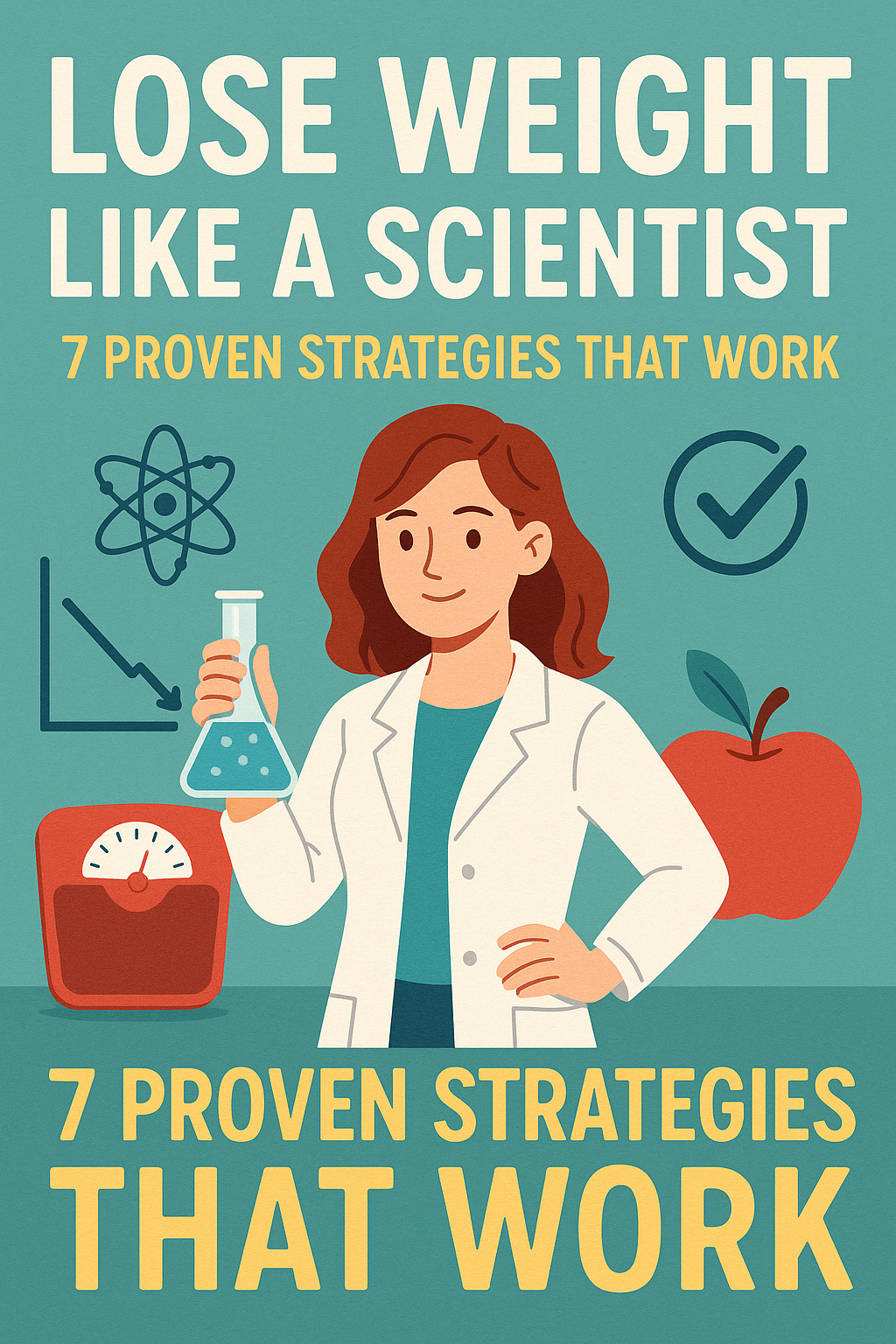7 Proven Strategies That Work
Lose Weight Like a Scientist. In the ever-evolving landscape of weight loss, science-backed methods stand as the most reliable tools. As a collective dedicated to evidence-based wellness, we present 7 research-driven strategies that deliver consistent, measurable results. These are not trends or fads—they are rooted in clinical studies and biological principles.

1. Prioritize Protein for Thermogenesis and Satiety
Protein is the cornerstone of metabolic efficiency. Numerous studies affirm that increasing protein intake boosts thermogenesis—the energy required to digest food—by up to 30% more than fats or carbohydrates. High-protein diets also increase feelings of fullness by elevating satiety hormones like GLP-1, peptide YY, and cholecystokinin, while simultaneously reducing levels of the hunger hormone ghrelin.
We recommend aiming for 1.6–2.2 grams of protein per kilogram of body weight daily, with sources including lean meats, eggs, Greek yogurt, legumes, and whey isolate.
2. Embrace Resistance Training to Preserve Lean Mass
Weight loss without muscle retention leads to metabolic slowdown. Resistance training, supported by research from the Journal of Applied Physiology, helps maintain lean muscle while targeting fat mass. This preservation of muscle mass ensures a higher resting metabolic rate, preventing the infamous plateau many face during prolonged caloric deficits.
Incorporate 3–5 sessions of compound movements weekly—squats, deadlifts, presses, and pulls. The goal is progressive overload, not just movement.
3. Leverage Time-Restricted Eating to Regulate Hormones
Intermittent fasting, particularly the 16:8 time-restricted eating model, has shown promise in improving insulin sensitivity, reducing inflammation, and optimizing growth hormone secretion, which aids fat metabolism.
In clinical studies, intermittent fasting resulted in 3–8% weight loss over 3–24 weeks, with substantial reductions in waist circumference and visceral fat. The focus is not starvation but strategic feeding windows aligned with circadian biology.
4. Monitor Caloric Intake with Precision, Not Estimation
Weight management is inherently a caloric equation. But most people underestimate their intake by up to 30%, according to studies in The American Journal of Clinical Nutrition. Using data-driven tracking tools like MyFitnessPal, Cronometer, or macro spreadsheets increases dietary adherence and accuracy.
Rather than guesswork, calculate Total Daily Energy Expenditure (TDEE) and implement a sustainable 15–25% caloric deficit. This prevents metabolic adaptation and psychological burnout.
5. Optimize NEAT: Non-Exercise Activity Thermogenesis
NEAT accounts for up to 50% of daily energy expenditure in active individuals, yet it’s the most overlooked fat-loss lever. NEAT includes all movement outside of formal exercise—walking, typing, fidgeting, cleaning.
To increase NEAT:
- Take 10,000–12,000 steps daily
- Use standing desks
- Perform 5-minute mobility breaks every hour
Boosting NEAT is often more impactful than a one-hour gym session, especially for desk-bound professionals.
6. Sleep: The Hormonal Master Regulator of Weight Loss
Sleep is not rest—it’s metabolic regulation. Inadequate sleep (<6 hours per night) elevates ghrelin, reduces leptin, and spikes cortisol—a fat-storage hormone. The Journal of Clinical Endocrinology & Metabolism confirms that sleep-deprived individuals consume 300–500 extra calories per day.
We recommend:
- 7–9 hours of uninterrupted sleep
- Blue-light blocking after sunset
- Consistent wake/sleep times—even on weekends
Quality sleep is not optional; it’s non-negotiable for sustainable fat loss.
7. Gut Health: The Microbiome’s Role in Weight Regulation
Emerging evidence connects gut flora diversity with weight status. An imbalanced microbiome contributes to insulin resistance, chronic inflammation, and increased energy harvest from food.
To foster a fat-loss-friendly microbiome:
- Consume fermented foods (kimchi, kefir, sauerkraut)
- Include prebiotic fiber (onions, garlic, leeks)
- Consider a broad-spectrum probiotic supplement
Studies suggest that increased Bacteroidetes-to-Firmicutes ratios are linked to reduced obesity risk and improved lipid metabolism.
Conclusion: Science Is the Shortcut
Weight loss is not about suffering—it’s about strategy. By applying these 7 science-supported principles, anyone can initiate and sustain weight loss without relying on gimmicks. From macronutrient manipulation and resistance training to microbiome modulation and sleep hygiene, each strategy plays a role in reshaping not just the body, but the metabolic foundation.
Act like a scientist. Eat like a biologist. Train like an athlete. And sleep like a champion.
Results will follow. Please Refer Our Other Websites For More Information
1: https://usnitricboost.com
2: https://agelessknees.fitsyfit.com/
3: https://primeebiomee.com
4: https://vertiganecs.com
5: https://en-thegenuiswave.com
6: https://teaburn.fitsyfit.com
7: https://en-uss-prostavive.com/
8: https://arctticblast.com/
9: https://en-en-mitolyne.com
10: https://fastwealthh.com
11: https://en-nageno.com
12: https://gleuco6.com
13: https://hepaato-burn.com/
